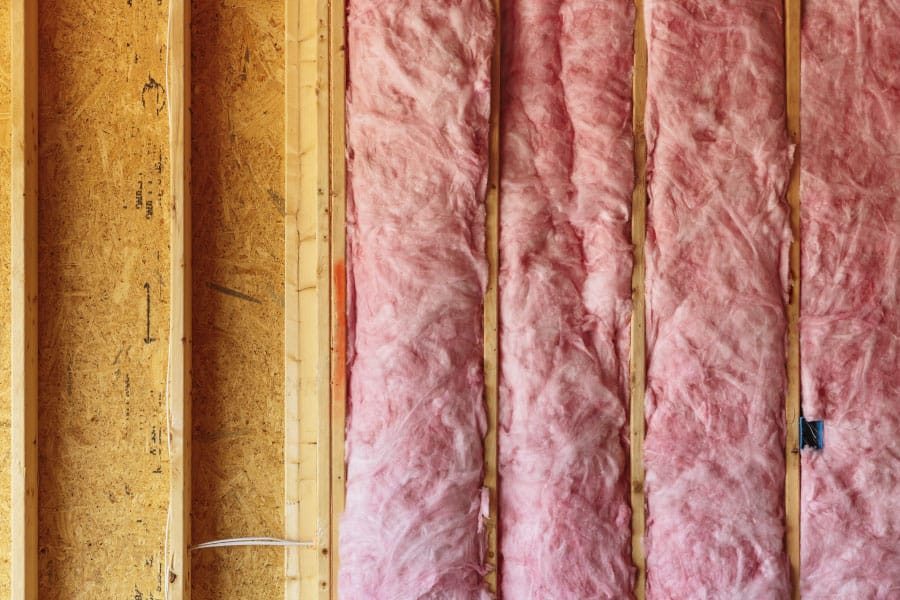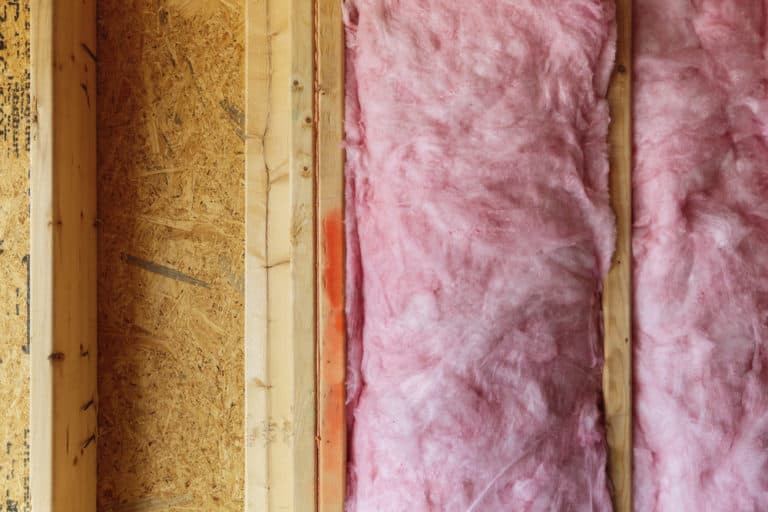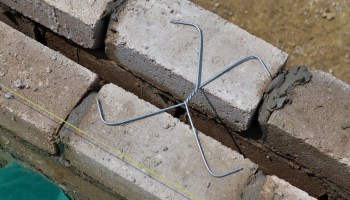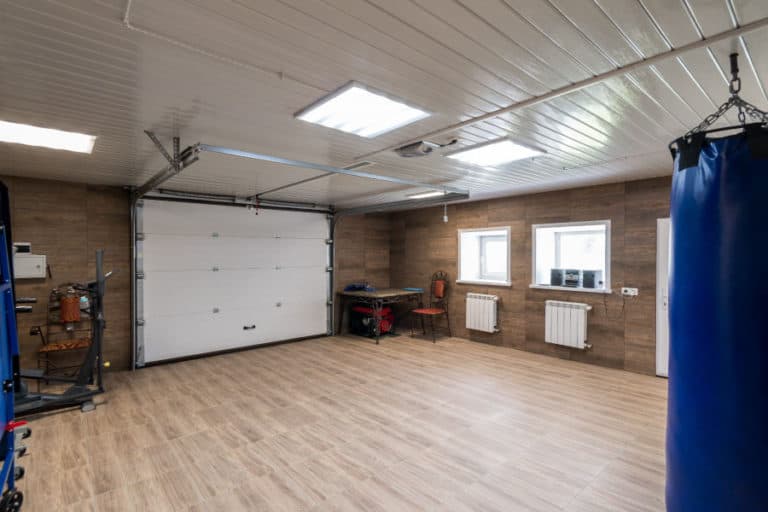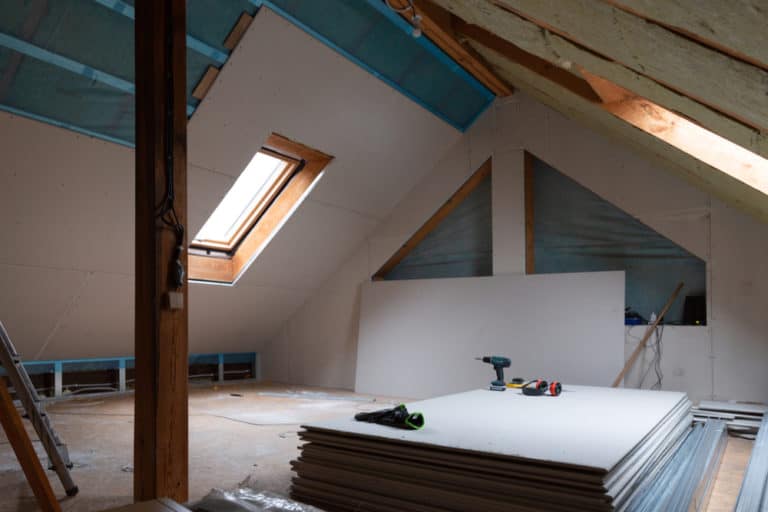Can You Use Loft Insulation in Stud Walls?
Loft insulation is a requirement in locations that experience cold winter. During winter times, you want to keep as much heat in your home as you possibly can. A stud wall is common within houses due to its affordability and ease of maintenance.
Is it possible to get the benefits of loft insulation and apply it to stud walls?
Yes, you can use the same insulation finish used in lofts for stud walls, however, it is far from ideal. The main difference between loft insulation finishes and other insulation finishes is that loft insulations specialize more in keeping the heat inside the house since heat usually escapes through the roof. As such loft insulation was not designed for walls.
In this article, we will be going more into loft insulation, stud walls, and how to insulate your stud wall properly.
What is loft insulation?
Loft insulation is a barrier that prevents heat from escaping through the roof. A good chunk of it leaves the building through the roofing. This is troublesome for homes in locations that experience winter as low temperatures can cause damage to the building.
Designing your house in such a way that minimizes the amount of heat loss during winter will save you money during the winter months when you have to use temperature controls to keep your house warm.
Types of loft insulation
There are four different types of loft insulation, each with their own pros and cons. As a rule of thumb, check which type of insulation would best address your insulation needs.
Blanket type insulation
Blanket type insulation is when the material is woven into a blanket—installed as a “cover,” which acts as a barrier.
Fill type insulation
Fill type insulation, as the name implies, is using granules of material to fill a certain space.
Blown-Fibre insulation
This insulation type will require professional help to install. Blown-fiber insulation involves blowing in the materials to fill up space, particularly useful for areas that are harder to reach.
Sheet loft insulation
This type of loft insulation is installed on the roof. The sheets are usually hard, stiff, and their applications can range anywhere from preventing moisture build-up, to acting as a fire retardant.
Materials for Loft insulation
Here is a brief list of the common materials used in loft insulations and a description on why they work well as insulators:
| Material | Description |
| Fiberglass | Fiberglass is either made into a blanket type insulation or a fill type insulation. Fiberglass is relatively cheap and easy to install. There are, however, numerous health deterrents if mishandled. |
| Mineral Rock wool | As the name suggests, mineral rock wool is a cloth-like material made from rocks. Mineral rock wool provides not only insulation but also fire protection when needed. This type of insulation can also serve as a sound dampener. |
| Cellulose | Cellulose is a plant fiber used for building insulation. Cellulose filling insulation is applied by filling the crevices between utilities and the walls, which prevents air from escaping or entering a loft. |
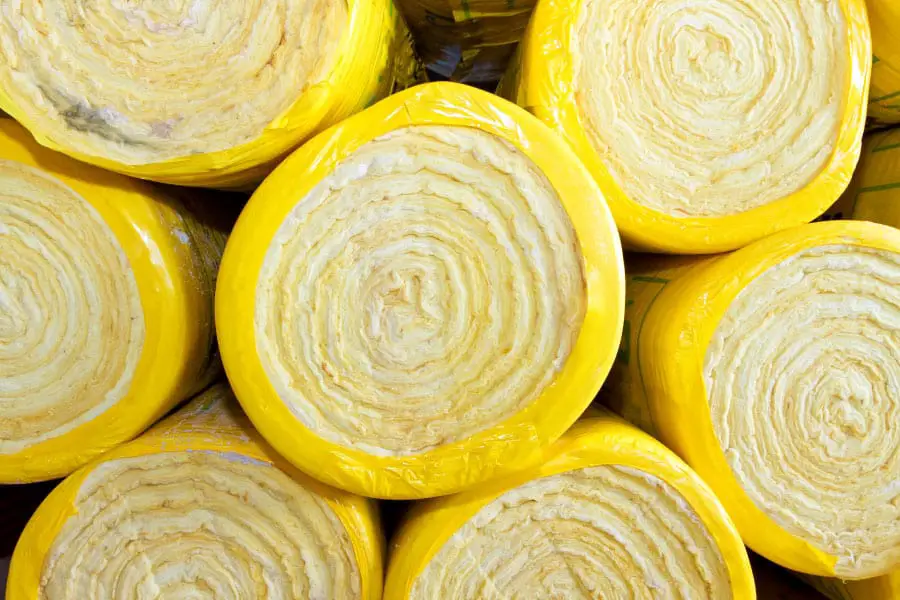
The stack effect explained
The stack effect is used by architects to plan how air circulates inside a building. Most notably, what causes the stock of it is not the air itself but the temperature of the air.
The difference in air density between an indoor area and an outdoor area may cause one of two effects:
- Either the air goes in in the case that the air density inside the building is lighter
- The air goes out if the air of the building is heavier compared to the air outside.
Architects utilize this phenomenon by designing houses in such a way that allows a sort of “breeze” to form inside the building.
During the wintertime, what happens is that the hot air rises to the top of the building, and as hot air rises, cold air will take its place at the bottom. If the inhabitants downstairs feel too cold, they would raise the thermostat, and the reverse what happened. Since there is hot air at the bottom, then the cold air from the top would start going downwards.
Understanding the stack effect and why loft insulation is designed as it is, is essential information when considering what loft insulation type should be used for stud walls.
Stud walls explained
A stud wall is a hollow wall, usually used as a partition between spaces. It can be made with either metal studs or wood studs. The main difference between the two is they provide different solutions for different problems; in other words, the best type is situational. In the case of insulation, however, the wood-type stud walls would be better because they are easier to manipulate.
The purpose of a stud wall is the same as any other wall, which is to hold up any windows, utilities, doors, and to provide insulation.
The main benefits of stud walls over other walls are how light a stud wall is, the ease of access that it provides for utilities compared to other wall types, and it’s affordability in construction.
When to use loft insulation in stud walls
The principles for loft insulation can also be applied for stud wall insulation. The main difference is that for stud wall insulation, you probably want to use only a blanket type.
The purpose of insulation will also be the same, which is to keep heat inside the house and to prevent water vapors from condensing. As much as possible, you don’t want any heat going into the walls; instead, the objective of wall insulation is to make sure that heat goes to the air of the room instead.
Other measures you can take to keep heat inside the building
The following are ways in which you can keep your house warmer during the colder months of the year:
- Let sunlight into your window. If the sun happens to shine during these times, open the blinds and allow the free heat to entire your house.
- Use your curtains, when there is no sun, to prevent the air in your room from interacting with colder temperatures.
- Check for any opening that the cold can use to enter your house.
- Close your doors, especially in rooms that don’t need as much heat. This is to prevent the heated air from moving around too much.
- To save on electricity, don’t turn up the heat when it gets cold; instead, use your temperature in such a way that prevents your house from getting too cold in the first place. Using timers works well for this method.
- Remove obstructions from heat sources. This allows the heated air to better circulate around the room or the rest of the house instead of being absorbed by objects.
- Maximize your heat sources by adding reflectors in the nearby area. This could be anything from aluminum foil to radiator panels.
Conclusion
Insulation is a vital part to consider, especially when you live in colder climates. Think of insulation as an investment rather than an expense for your house as it prevents damage to the building, improves comfortability, and reduces energy consumption.
When it comes to insulation for stud walls, although you cannot use the same insulation finish used in lofts, you can apply the principles of loft insulation on stud walls.
For stud wall insulation, as much as possible, you don’t want any heat going into the walls; instead, you want to make sure that heat goes to the air of the room instead.

